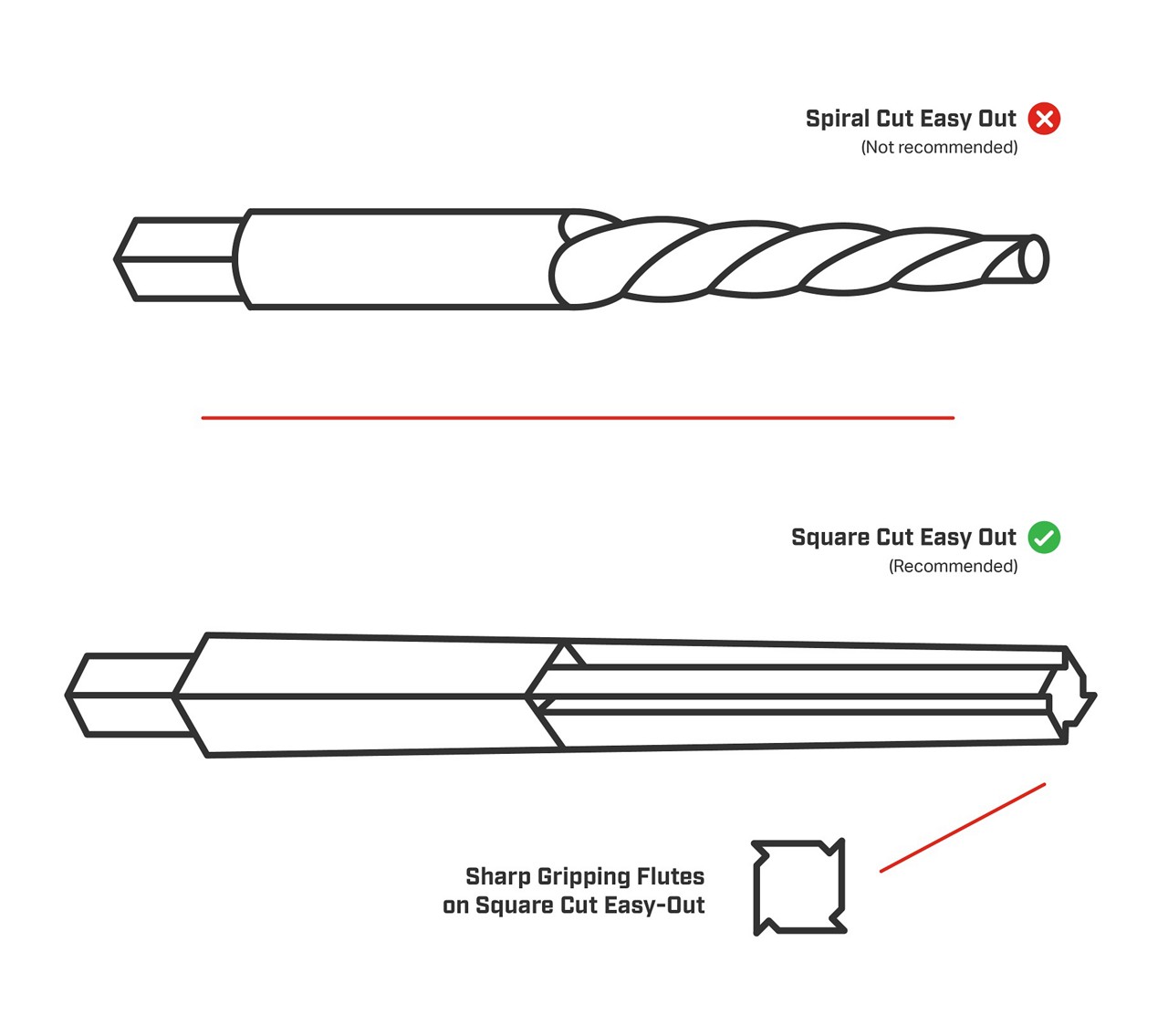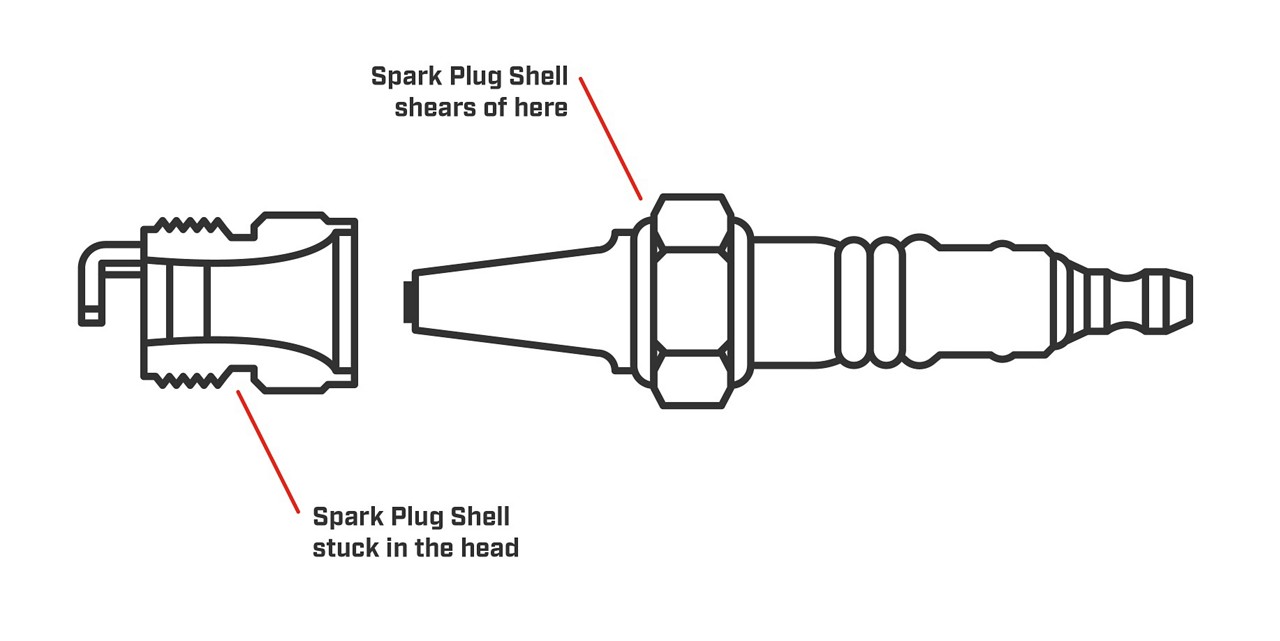Removing a broken spark plug from a cylinder head can be tricky. But don’t worry, it’s manageable with the right steps.
A broken spark plug can cause big problems for your engine. You need to fix it quickly to keep your car running smoothly. This blog will guide you through the process. You’ll learn why spark plugs break, what tools you need, and the steps to remove the broken piece safely.
Whether you’re a car enthusiast or a beginner, this guide will help you handle the task with confidence. So, let’s dive in and get that broken spark plug out!

Credit: www.reddit.com
Tools Required
You need a few basic tools. A ratchet with socket set is essential. Also, a spark plug socket is important. A wrench and a screwdriver can help too. Gloves protect your hands. Safety glasses protect your eyes. A flashlight helps to see better.
Some tools are more special. A broken spark plug extractor is crucial. This tool helps you remove the broken plug. A thread chaser cleans the spark plug hole. Penetrating oil loosens the stuck plug. A torque wrench ensures correct tightness. Compressed air blows out debris.

Credit: www.championautoparts.com
Safety Precautions
Ensuring safety is vital when removing a broken spark plug from a cylinder head. Always wear protective gloves and safety glasses to prevent injuries. Disconnect the battery to avoid electrical hazards.
Protective Gear
Wearing the right protective gear is very important. Always wear safety goggles to protect your eyes. Use gloves to keep your hands safe. A long-sleeve shirt is good to protect your arms. Don’t forget to wear strong, closed-toe shoes.
Work Area Preparation
Prepare your work area before starting. Make sure the area is clean and well-lit. Remove any flammable items near your workspace. Keep a fire extinguisher nearby. Have all tools and materials ready and within reach. This will make the job easier and safer.
Preparation Steps
Start by gathering necessary tools like pliers, penetrating oil, and a spark plug extractor. Ensure the engine is cool before beginning.
Disconnect Battery
Safety first. Disconnect the car battery to avoid any shocks. Find the battery under the hood. Use a wrench to loosen the nut on the negative terminal. Remove the cable and move it aside. This step stops electricity from flowing.
Clean Surrounding Area
Dirt can fall into the cylinder. Use a small brush or air compressor to clean the area around the spark plug. Make sure no debris is left. This keeps the engine clean. It also makes the work easier.

Credit: www.championautoparts.com
Removing Spark Plug Boot
First, open the car hood. Find the spark plug wires. These wires lead to the spark plug boot. The boot covers the spark plug. Check each wire carefully. You will see a rubber piece. That is the boot.
Use a spark plug boot puller. This tool helps you pull the boot without damage. Grip the boot, not the wire. Pull gently but firmly. Twist the boot if it is stuck. Do not use too much force. You do not want to break the boot.
Extracting The Broken Spark Plug
Removing a broken spark plug from a cylinder head requires patience and the right tools. Start by using a spark plug extractor kit. This kit helps to safely remove the broken piece without damaging the cylinder head.
Using An Easy Out Tool
An Easy Out Tool can help remove a broken spark plug. Start by cleaning the area around the spark plug. This avoids dirt falling into the cylinder. Next, use a drill to make a small hole in the center of the broken plug. Insert the Easy Out Tool into the hole. Turn it counterclockwise to grip and remove the broken piece. If it doesn’t come out easily, apply some penetrating oil. This can help loosen the plug. Patience is key. Work slowly to avoid damage.
Alternative Methods
Other methods exist if the Easy Out Tool fails. One way is to use a bolt extractor. Another option is using a left-hand drill bit. This can sometimes twist the plug out as you drill. You can also try heating the area around the plug. Heat can expand the metal and make removal easier. Always wear safety gear. Protect your eyes and hands from debris.
Cleaning The Cylinder Head
Use a soft brush to clean the cylinder head. Be gentle to avoid scratches. Remove all dust and dirt. A clean surface helps in better inspection.
Check for any cracks or damage. Look closely at the surface. Damaged areas need fixing before installing a new spark plug. A damaged cylinder head can cause engine problems.
Installing A New Spark Plug
Pick the correct spark plug for your car. Check the manual for the right size and type. Using the wrong spark plug can cause problems. Make sure it fits well and works with your engine.
First, clean the area where the spark plug goes. Dirt can cause issues. Next, screw in the new spark plug by hand. This avoids cross-threading. Tighten it gently with a wrench. Do not use too much force. Over-tightening can damage the threads.
Post-installation Checks
Ensure no debris falls into the cylinder. Use a socket wrench to remove the broken spark plug carefully. Always check for damage after removal.
Reconnecting Battery
First, locate the battery terminals. Attach the positive cable to the positive terminal. Then, attach the negative cable to the negative terminal. Ensure the connections are tight. Loose connections can cause problems.
Check the battery voltage. It should be around 12.6 volts. If not, charge or replace the battery. A good connection ensures the car will start.
Starting The Engine
Turn the key in the ignition. Listen for any unusual sounds. The engine should start smoothly. If it doesn’t, recheck your work. Look for loose connections or parts.
Let the engine run for a few minutes. This helps to check for leaks. Look under the car for oil or coolant. Fix any leaks immediately. A smooth-running engine means success.
Conclusion
Removing a broken spark plug can seem tough. Follow the steps carefully. Use the right tools and stay patient. Safety first. Wear gloves and eye protection. With practice, the task becomes easier. Keep your car in good shape. Regular maintenance helps avoid such issues.
Your car will thank you.
